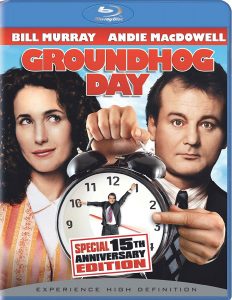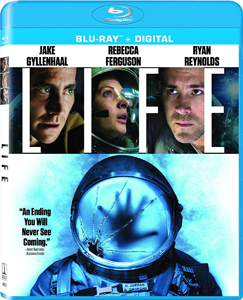It’s hard to review “Life” (March 2017) — which I recently saw via Redbox – without entering into apologia. It is undeniably in the “Alien” ripoff subgenre. But it strikes me as odd that “Gravity” (2013), for example, has a 7.8 on IMDB and “Life” has a 6.6. Both are about accidents on a modern-day space station, featuring all-star casts and a mission statement to be realistic. Maybe the monster in “Life” is the difference-maker in that rating, but to me, the monster is a positive, not a negative.
The “Alien” films are generally set in the distant future, and therefore they feature relatively spacious ships with artificial gravity. “Life” is set in present day on the International Space Station, and writers Rhett Reese and Paul Wernick and director Daniel Espinosa don’t hide the fact that this means the astronauts are floating all the time. Rather, they embrace the challenge.
They further supply realism by showing the astronauts talking to the news media about their discovery of a single cell of life on Mars, via a scientific capsule they’ve picked up. Kids ask cute questions to the astronauts, such as “How do you go to the bathroom in space?,” and one kid wins a contest to name the life form: As she is from Calvin Coolidge Elementary, she chooses “Calvin.”
While Coolidge was perhaps the most hands-off president in U.S. history, that’s not the case with this life form, which follows the “Alien” xenomorph pattern of growing bigger and smarter. “Life” is not as original as “Alien,” obviously, nor as deep as “Prometheus” and “Alien: Covenant,” which poured themes about the meaning and nature of life on top of its horror story.
“Life” implies some depth about the meaning of life, but it mostly works on a simpler level: Calvin’s attack scenes are tense, scary and often incredibly gross, starting when the organism grabs the gloved hand of scientist Hugh (Ariyon Bakare) and crushes it. The “Alien” xenomorph was scary in 1979 because it was unknown; Calvin is scary because of what Hugh observes about it: Every cell in its body is a muscle, a nerve and a brain. This first discovery of life on Mars is incredible, but that’s soon relegated to the backdrop. Once Calvin is loose, “Life” is a survival story.
Space movies used to spend all their money on special effects rather than actors, but that has changed in recent years. I suppose A-listers Ryan Reynolds (as Rory Adams) and Jake Gyllenhaal (as David Jordan) are in “Life” to give it more cachet (although the hype may have backfired), but they lead a strong cast of nicely drawn characters. I particularly enjoyed Hiroyuki Sanada as Sho Murakami; he’s one of those actors you’ve seen before but can’t remember where (maybe in “Sunshine,” another cerebral space film), and his precise way of speaking English as his second language gives him a compelling air. Rebecca Ferguson’s firewall specialist Miranda North and Olga Dihovichnaya’s Ekaterina Golovkina round out the crew.

“Life” provides an interesting mix of tensions, backed by an ominous score from Jon Ekstrand. The astronauts’ lives are at stake, but — as becomes clearer with each iteration of Calvin’s growth — so is the entire human race. The “Alien” franchise touched on this idea with 1997’s “Alien Resurrection,” wherein Ripley dispatches the xenomorph in the nick of time as the ship hurtles toward Earth. However, there would’ve been a chance of defeating that alien had it survived.
Calvin is a whole ’nother matter. In a reverse of “War of the Worlds,” where the common cold kills the Martians, “Life” shows us how chillingly plausible it would be for our first alien encounter to be not merely dangerous to the human race, but almost instantly deadly.

